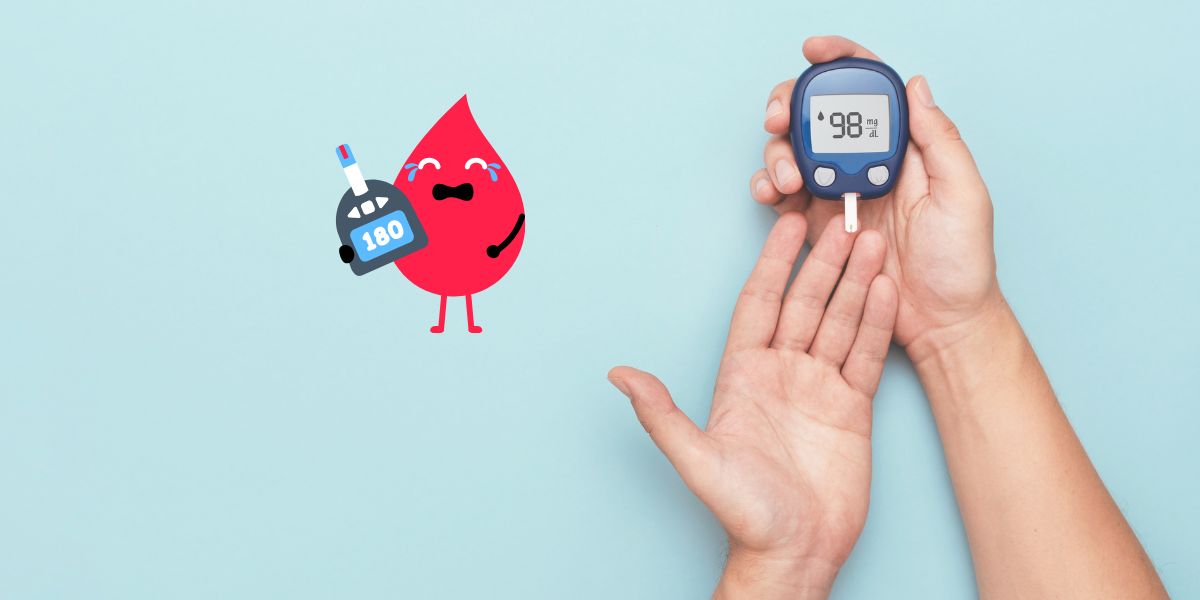Kapanlagi.com - Elevated blood sugar, especially if it reaches 500 mg/dL or more, is not a trivial matter. This condition is known as acute hyperglycemia and can pose a serious threat to your health. If not addressed quickly, the risk of more severe complications looms, ranging from disturbances in vital organs to dangerous conditions such as diabetic ketoacidosis and hyperglycemic hyperosmolar nonketotic syndrome.
For those of you who suffer from diabetes or have a family history of this disease, it is crucial to know how to quickly lower blood sugar. In addition to medical treatment, there are several simple steps you can take on your own to keep blood sugar levels stable.
So, if you or someone close to you experiences a blood sugar spike up to 500 mg/dL, what should you do? Here are the steps you can take to lower high blood sugar safely and effectively.
1. The Dangers of Blood Sugar Reaching 500
A blood sugar level reaching 500 mg/dL is very dangerous and requires immediate intervention. This number is far above the normal limit and can increase the risk of serious conditions such as diabetic ketoacidosis, which can be life-threatening if not addressed quickly and appropriately.
High blood sugar levels in the long term can also lead to chronic complications such as cardiovascular disease, neuropathy, and kidney disorders. The damage caused by high blood sugar to blood vessels and nerves can also result in significant complications for body organs, affecting overall quality of life.
It is important to regularly monitor blood sugar levels and follow the diabetes management plan recommended by your doctor to prevent more serious complications. Here are steps you can take to safely and effectively lower high blood sugar levels.
2. Use Insulin as Directed by Your Doctor
For diabetes sufferers who have undergone insulin therapy, injecting fast-acting insulin can be an effective way to instantly lower blood sugar levels. However, it is important to always follow the dosage recommended by your doctor.
After injecting, don't forget to check your blood sugar levels within 15 minutes to ensure that the insulin is working properly.
Be careful, excessive use of insulin can trigger hypoglycemia, a dangerous condition caused by extremely low blood sugar. If you experience symptoms such as dizziness, confusion, or weakness after the injection, contact your doctor immediately for appropriate treatment.
3. Maintain a Healthy Diet and Avoid Processed Carbohydrates
Maintaining a healthy diet is key to stabilizing blood sugar levels, especially for diabetes sufferers. The American Diabetes Association recommends choosing foods with a low glycemic index, which is much better than consuming risky processed carbohydrates.
It is advisable to avoid sweet foods and simple carbohydrates like white bread, white rice, and delicious pastries. Instead, enjoy fiber-rich foods such as green vegetables, oatmeal, and whole grain bread, which can help control blood sugar more effectively.
Don't forget, drinking enough plain water is also very important, as it helps the kidneys in eliminating excess sugar from the body!
4. Routine Light Intensity Exercise
Exercise is not only enjoyable, but it also has incredible benefits for health, especially in naturally controlling blood sugar levels. Research published in the Biochemical Journal reveals that physical activity can improve insulin sensitivity, making the body more efficient in utilizing glucose.
If your blood sugar level is still below 240 mg/dL, try taking a leisurely walk for 30 minutes—a simple yet effective way!
However, if you find ketones in your urine, it is best to avoid heavy exercise, as this can worsen the condition. By exercising regularly, you can keep your blood sugar levels stable and achieve optimal health in the long term.
5. Manage Stress and Ensure Adequate Sleep
Stress is not only a mental enemy, but it can also cause spikes in blood sugar levels, thanks to the cortisol and glucagon hormones released by the body when we are under pressure.
Therefore, managing stress is key to maintaining blood sugar stability. Try calming relaxation techniques, such as meditation, yoga, or breathing exercises, to relieve tension.
Additionally, make sure you get enough quality sleep, as good rest is vital to support the body's metabolism. Avoid staying up late and give your body a chance to recover, so that health is maintained and blood sugar remains balanced.
6. Perform a Ketone Test and Go to the Doctor Immediately
When blood sugar levels reach 500 mg/dL, the first action to take is to perform a ketone test in the urine. High ketone levels can be a sign of diabetic ketoacidosis, a dangerous condition that can be life-threatening if not addressed promptly.
If the ketone test results show moderate or high levels, go to the hospital immediately for medical treatment. In some cases, patients may need to receive care in the emergency room to avoid the risk of further complications.
If you cannot see a doctor right away, make sure to stay well-hydrated and avoid high-carbohydrate foods until you receive medical attention.
7. What to Do If Blood Sugar Suddenly Spikes High?
If blood sugar rises drastically, check the ketone levels in the urine, drink plenty of water, avoid high-sugar foods, and consult a doctor immediately if the condition does not improve.
8. Can exercise immediately lower blood sugar?
Yes, light exercise such as walking can help lower blood sugar. However, avoid heavy exercise if blood sugar levels are very high or if there are ketones in the urine.
9. What is the normal blood sugar level after eating?
The normal blood sugar level after eating should be less than 200 mg/dL. If it exceeds this number, it is advisable to perform further checks and consult a doctor.
11. Are there foods that can help lower blood sugar quickly?
High-fiber foods such as green vegetables, legumes, and whole grains can help control blood sugar. Additionally, apple cider vinegar and cinnamon are also believed to have benefits in stabilizing glucose levels.
(kpl/rmt)
Disclaimer: This translation from Bahasa Indonesia to English has been generated by Artificial Intelligence.












